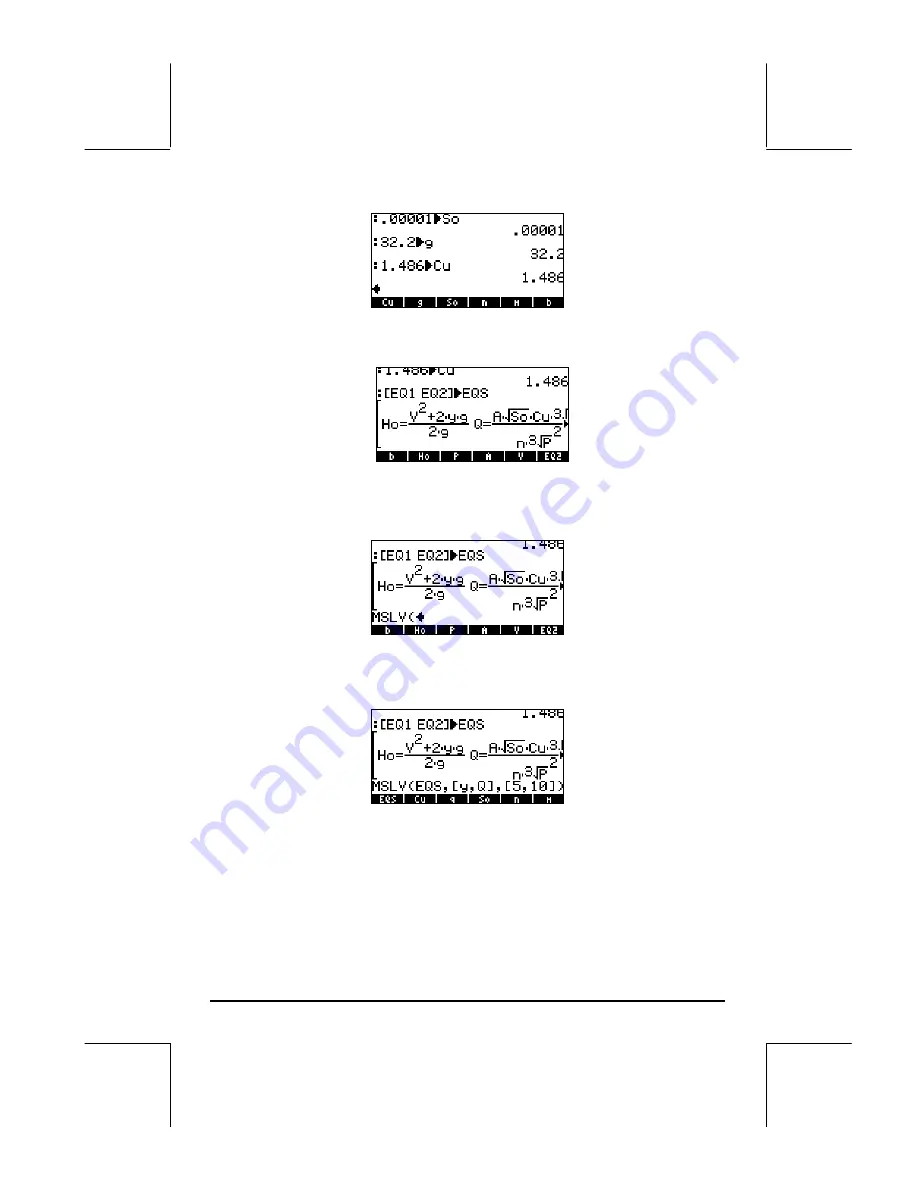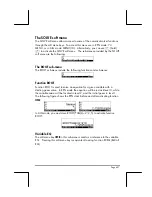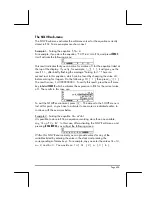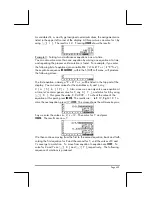
Page 7-8
Now, we are ready to solve the equation. First, we need to put the two
equations together into a vector. We can do this by actually storing the
vector into a variable that we will call EQS (EQuationS):
As initial values for the variables y and Q we will use y = 5 (equal to the
value of H
o
, which is the maximum value that y can take) and Q = 10 (this is
a guess). To obtain the solution we select function MSLV from the NUM.SLV
menu, e.g.,
‚Ï6
@@@OK@@@
, to place the command in the screen:
Next, we’ll enter variable EQS:
LL
@@EQS@
, followed by vector [y,Q]:
‚í„Ô~„y‚í~q™
and by the initial guesses
‚í„Ô5‚í 10
.
Before pressing
`
, the screen will look like this:
Press
`
to solve the system of equations. You may, if your angular
measure is not set to radians, get the following request:






























